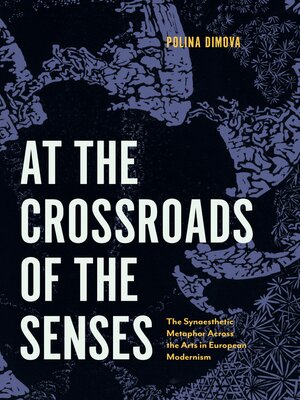At the Crossroads of the Senses
ebook ∣ The Synaesthetic Metaphor Across the Arts in European Modernism · Perspectives on Sensory History
By Polina Dimova

Sign up to save your library
With an OverDrive account, you can save your favorite libraries for at-a-glance information about availability. Find out more about OverDrive accounts.
Find this title in Libby, the library reading app by OverDrive.



Search for a digital library with this title
Title found at these libraries:
| Library Name | Distance |
|---|---|
| Loading... |
Inspired by Richard Wagner's idea of the total artwork, European modernist artists began to pursue multimedia projects that mixed colors, sounds, and shapes. Polina Dimova's At the Crossroads of the Senses traces this new sensory experience of synaesthesia—the physiological or figurative blending of senses—as a modernist phenomenon from its scientific description in the late nineteenth century to its prevalence in the early twentieth.
Structured around twenty theses on synaesthesia, this book explores the integral relationship between modernist art, science, and technology, tracing not only how modernist artists perceptually internalized and absorbed technology and its effects but also how they appropriated it to achieve their own aesthetic, metaphysical, and social goals. Through case studies of prominent multimodal artists—Oscar Wilde, Aubrey Beardsley, Richard Strauss, Aleksandr Scriabin, Wassily Kandinsky, František Kupka, Andrei Bely, and Rainer Maria Rilke—At the Crossroads of the Senses reveals the color-forms and color-sounds that, for these artists, laid the foundations of the world and served as the catalyst for the flourishing exchanges among the arts at the fin de siècle.
Rooted in archival research in Russia, Germany, France, and the Czech Republic, At the Crossroads of the Senses taps overlooked scientific sources to offer a fresh perspective on European modernism. Sensory studies scholars, literary critics, and art and music historians alike will welcome its many contributions, not least among them a refreshing advocacy for a kind of sensuous reading practice.







